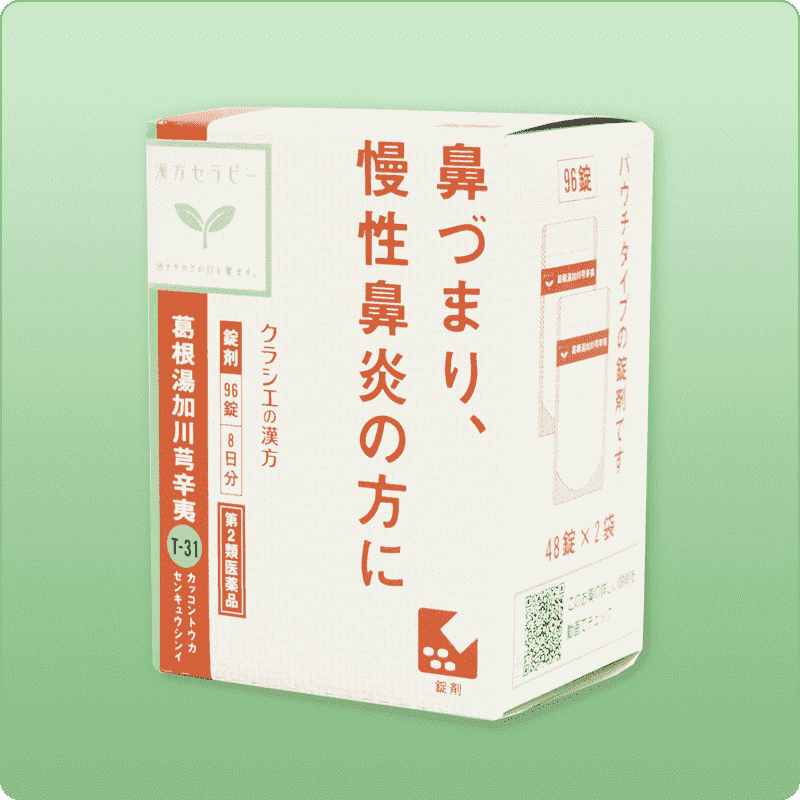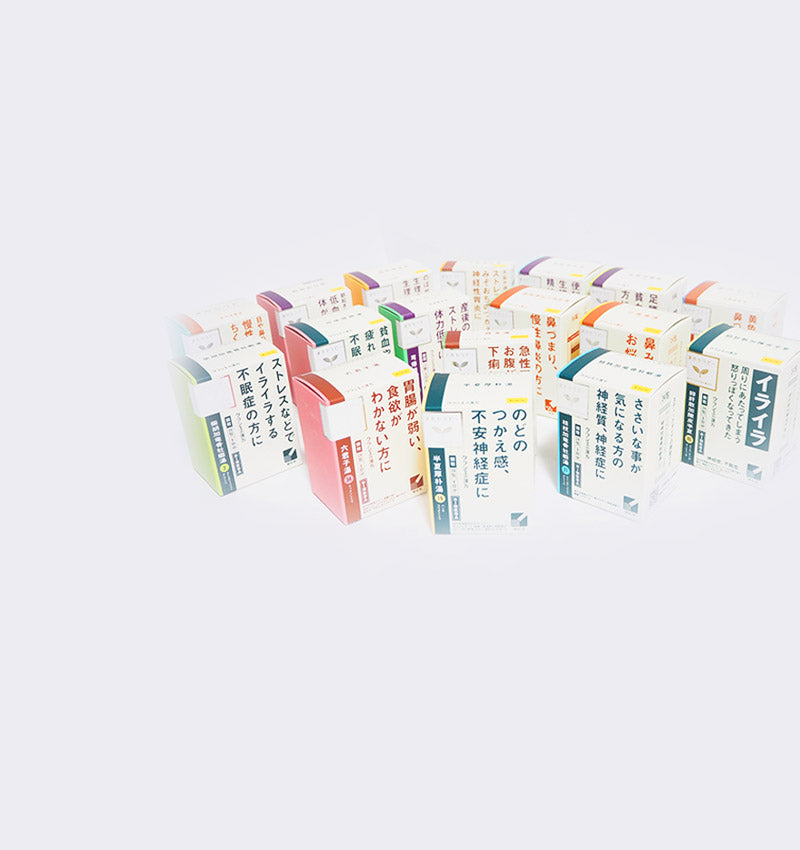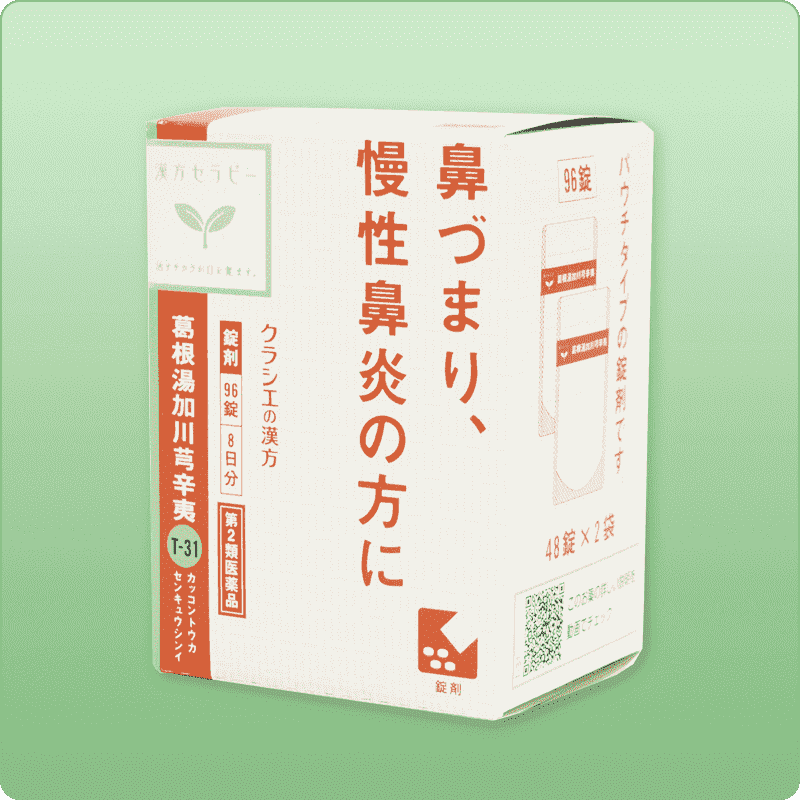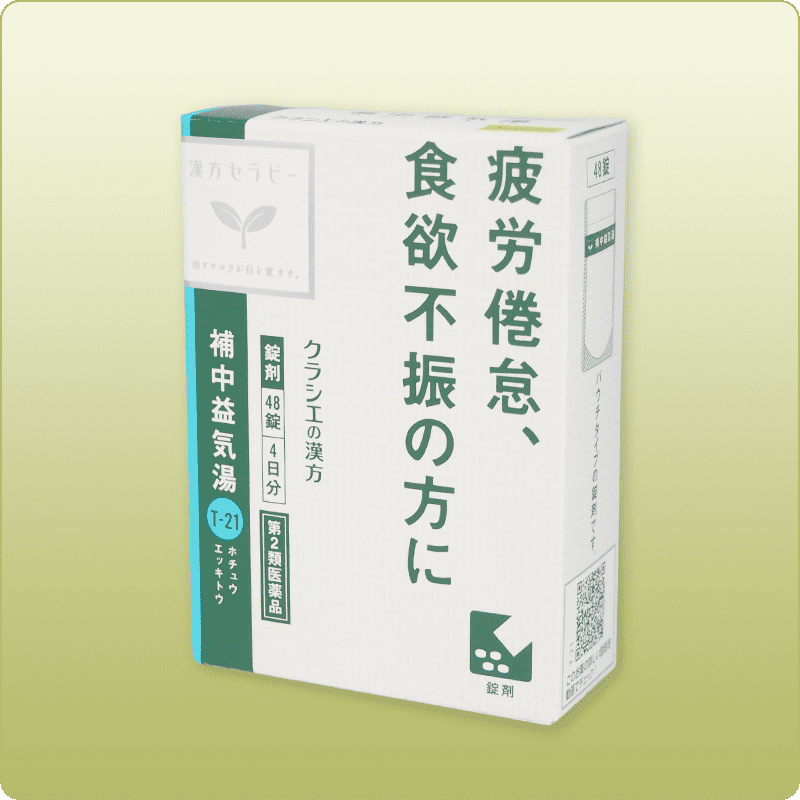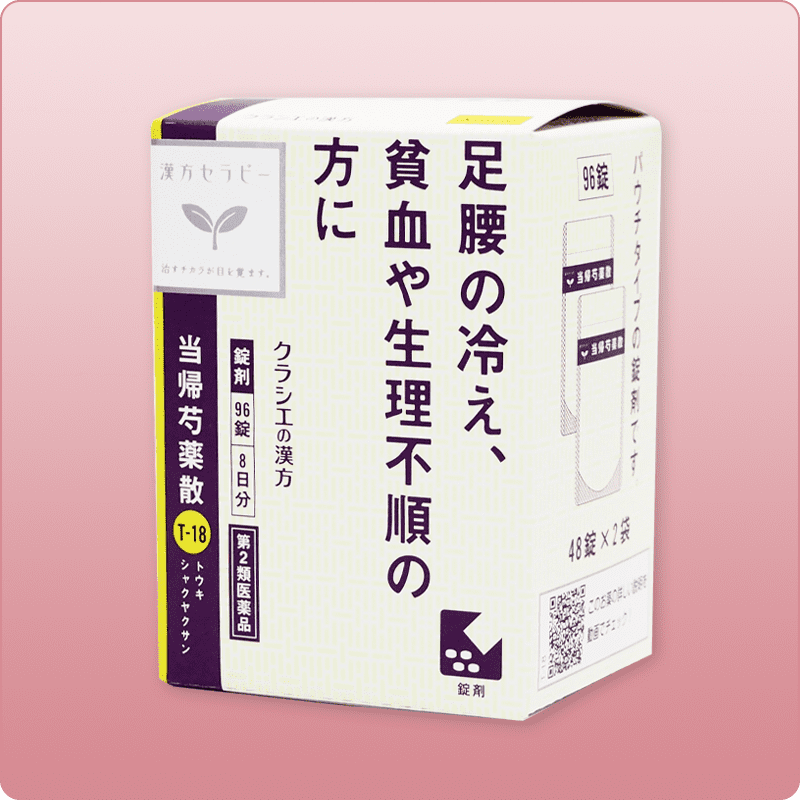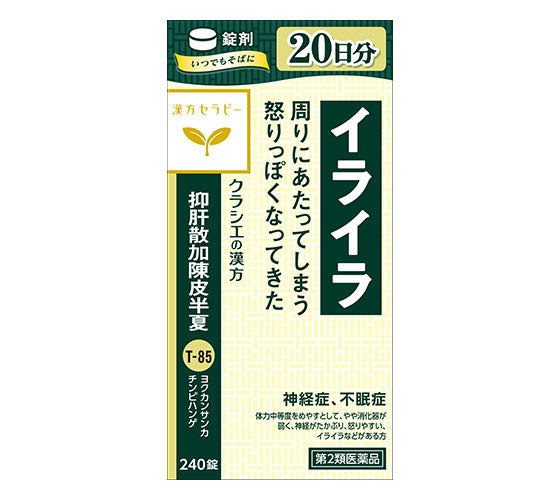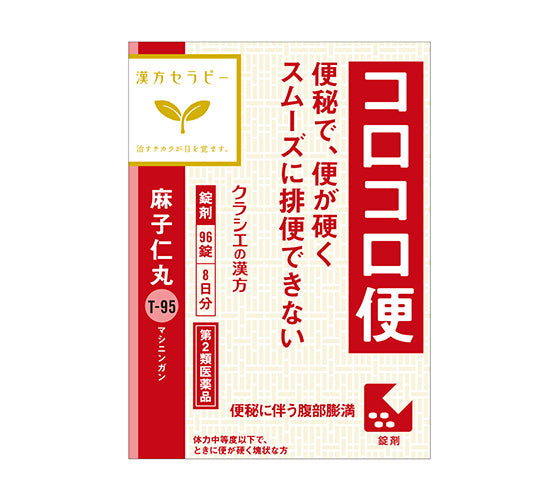Kakkontokasenkyushin'i Extract Tablets
Kakkontokasenkyushin'i Extract Tablets
Kakkontokasenkyushin'i Extract Tablets 《Kracie Kampo》
Japanese:葛根湯加川キュウ辛夷 Kakkonto Kasenkyushini
Chinese:葛根湯 Ge Gen Tang 加 川芎 Chuānxiōng, 辛夷 Xīnyí
Internal capacity
96 tablets (for 8 days)
Prescription commentary
"Kakkontokasenkyushin'i" is a combination of crude drug "Kakonto" with senkyu and shini, and is a medicinal formula used especially for allergic rhinitis, nasal congestion, and empyema in Japan.
Allergens, cold allergies, and viral infections can congest the nasal mucosa, causing symptoms such as stuffy nose. It is effective for such symptoms, as well as prolonged and chronic rhinitis and empyema.
Usage/capacity
Take with water or hot water before or between meals 3 times a day.
- Adult (15 years old and over)
- 4 tablets once
- Under 15 years old 7 years old and over
- 3 tablets once
- Under 7 years old 5 years old and over
- 2 tablets once
- under 5 years old
- Do not take
Ingredient name/ingredient display
Daily dose for adults:12 tablets (310 mg/tablet) Nakakakkonto Kagawa cucumber extract (1/2 amount):2,350 mg
(Extracted from 2.0 g each of Kakon and Ephedra, 1.5 g each of Taisou, Cnidium officinale, and Shini, 1.0 g each of cinnamon, peony, and licorice, and 0.5 g of ginger.)
Additives include hydroxypropylcellulose, crospovidone, crosCMC-Na, Mg stearate, silicon dioxide, and cellulose.
medicinal effect
The following ailments of those with relatively physical strength:stuffy nose, empyema (sinusitis), chronic rhinitis
Origin of Ge Gen Tang
Ge Gen Tang (葛根湯) is one of the traditional Chinese herbal remedies with its origins dating back to ancient China, possibly as far as ancient times. This ancient elixir was first documented in a Chinese medical text known as the 'Shang Han Lun.'
It was created by Zhang Zhongjing (張仲景), a physician during the Eastern Han Dynasty. During this period, China experienced economic prosperity and cultural flourishing, but it also faced frequent disease outbreaks.
Zhang Zhongjing, in response to the diseases afflicting people during that era, developed Ge Gen Tang based on his clinical experience and research findings. This herbal remedy proved highly effective, particularly in addressing symptoms like colds, influenza, and fever.
Origin of the Name "Ge Gen Tang"
The name "Ge Gen Tang" is derived from its main components. "Ge" refers to kudzu root, "Gen" points to licorice root, and "Tang" signifies a decoction or brewed herbal remedy. These components combine harmoniously to produce the unique therapeutic effects of Ge Gen Tang.
Transmission from Ancient Times to the Modern Era
Ge Gen Tang, due to its effective healing properties, is widely used not only in China but also around the world. Starting as an ancient secret remedy, its effectiveness has been confirmed by modern medicine and is trusted by many people.
Components and Effects of Ge Gen Tang
Pueraria root(Ge Gen)
Components: Kudzu root primarily contains isoflavones such as daidzein and puerarin.
Effects: It has fever-reducing, anti-inflammatory, and antibacterial properties, making it effective in relieving symptoms of colds, fevers, and similar conditions.
Licorice Root (Gan Cao)
Components: Licorice contains compounds like glycyrrhizic acid and saponins.
Effects: It soothes coughs and sore throats, possesses anti-inflammatory properties, and is used for digestive issues.
Chinese Date (Da Zao)
Components: Mainly rich in saponins and vitamin C.
Effects: It regulates the digestive system and promotes restful sleep, making it effective for indigestion and stress.
Ephedra (Ma Huang)
Components: It contains alkaloids like ephedrine and pseudoephedrine.
Effects: Ephedra helps relieve nasal congestion, respiratory issues, and widens the bronchial passages. It is used for symptoms of colds and asthma.
Cassia Bark (Gui Pi)
Components: Mainly comprised of compounds like cinnamaldehyde and coumarin.
Effects: It warms the body and promotes circulation, while also aiding in digestive regulation and stabilizing blood sugar levels.
Peony (Shao Yao)
Components: Peony contains compounds like paeoniflorin and tannins.
Effects: It has anti-inflammatory properties and relaxes muscle tension, making it useful for alleviating menstrual pain in women.
Ginger (Sheng Jiang)
Components: Primarily contains gingerol and shogaol.
Effects: It warms the body and activates digestive organs, making it effective for indigestion and combating cold-induced body chill.
Main Ingredients: Saponins, vitamin C
Effects: Digestive regulation, sleep promotion
Effects and Benefits
1. Enhanced Immunity: The isoflavones in Ge Gen Tang activate immune function, protecting the body against pathogens.
2. Antipyretic Effect: Isoflavones and glycyrrhizic acid reduce fever and normalize body temperature, making it effective for lowering high temperatures.
3. Alleviation of Headaches and Muscle Tension: Ginger components gingerol and shogaol relax muscles and relieve pain.
4. Digestive Regulation: Ge Gen Tang balances gastrointestinal health, aids in digestion, and is effective for appetite loss and indigestion.
5. Relief of Cold and Influenza Symptoms: Ge Gen Tang is particularly effective in treating early-stage cold symptoms, such as fever, sore throat, and nasal congestion. Early intervention is crucial, as taking Ge Gen Tang at the onset of fever can help raise body temperature and assist in combating the virus.
Caution
- Caution should be exercised to avoid overconsumption, and it's important to adhere to the appropriate dosage.
- Excessive intake of licorice can lead to side effects such as elevated blood pressure and fluid retention, making it particularly important for individuals with hypertension to be cautious.
- When using other traditional Chinese herbal remedies or supplements concurrently, be mindful of potential ingredient overlaps. It is essential to consult with a medical professional in such cases.
Couldn't load pickup availability
日本郵政で発送致します。
地域により$10〜$30程度
※為替レートの変動の影響を受ける場合があります。
※日本国内への発送は行っておりません。
お届けまでの日数は、地域や交通事情等により異なります。あらかじめご了承ください。
地域により7日〜14日程度
